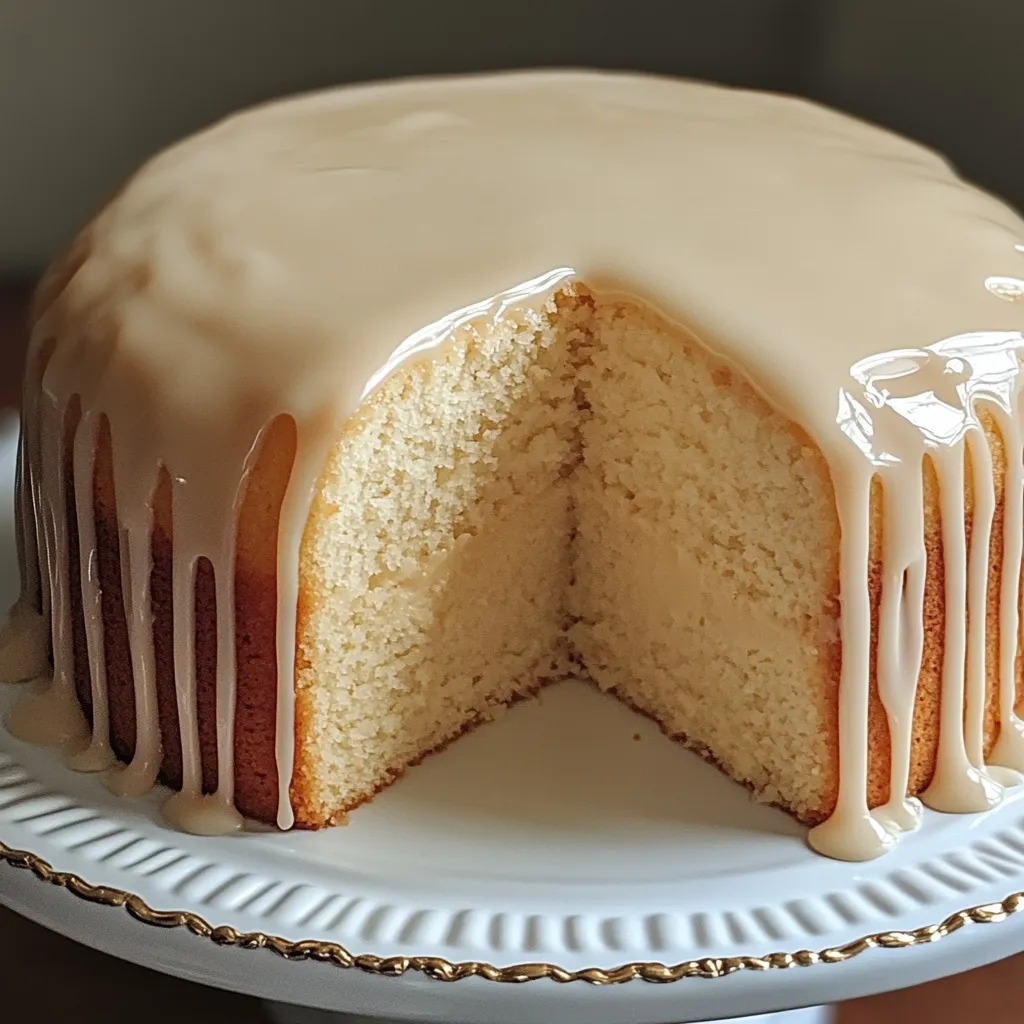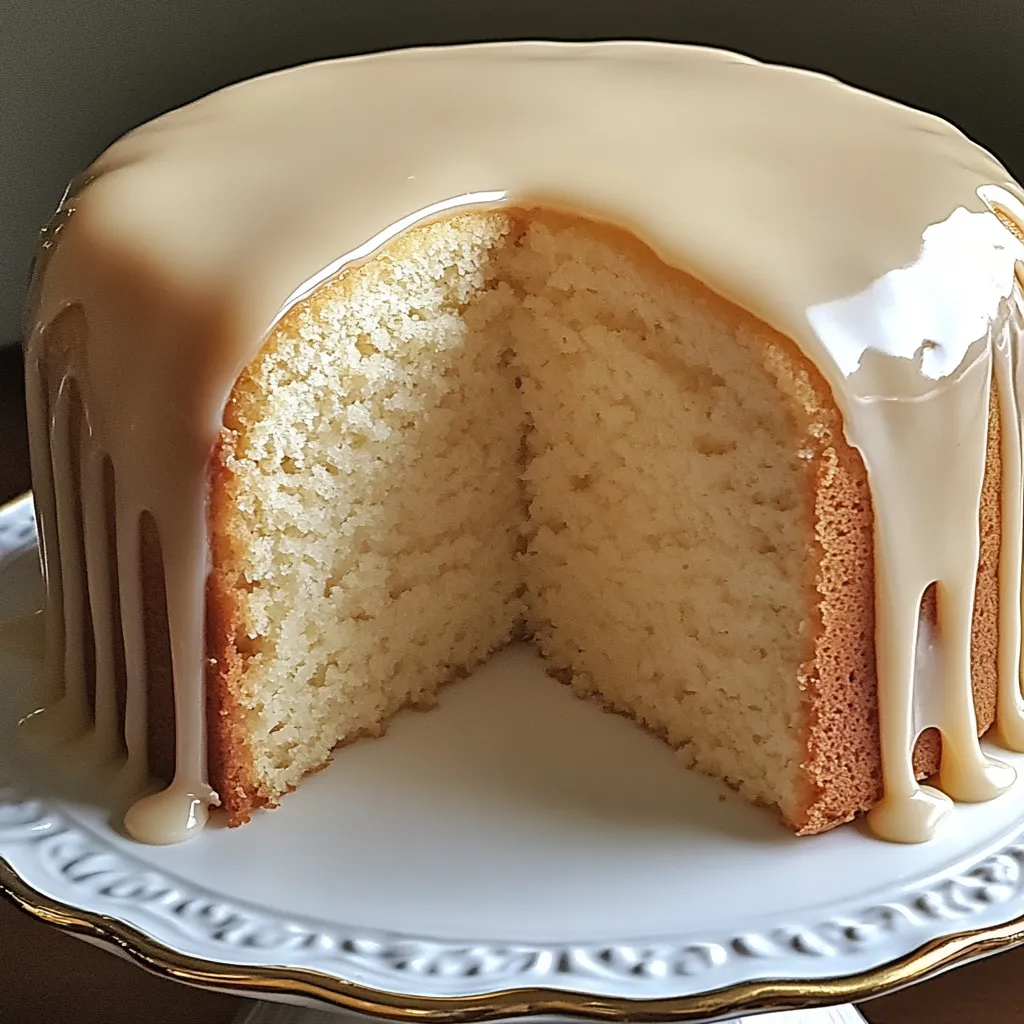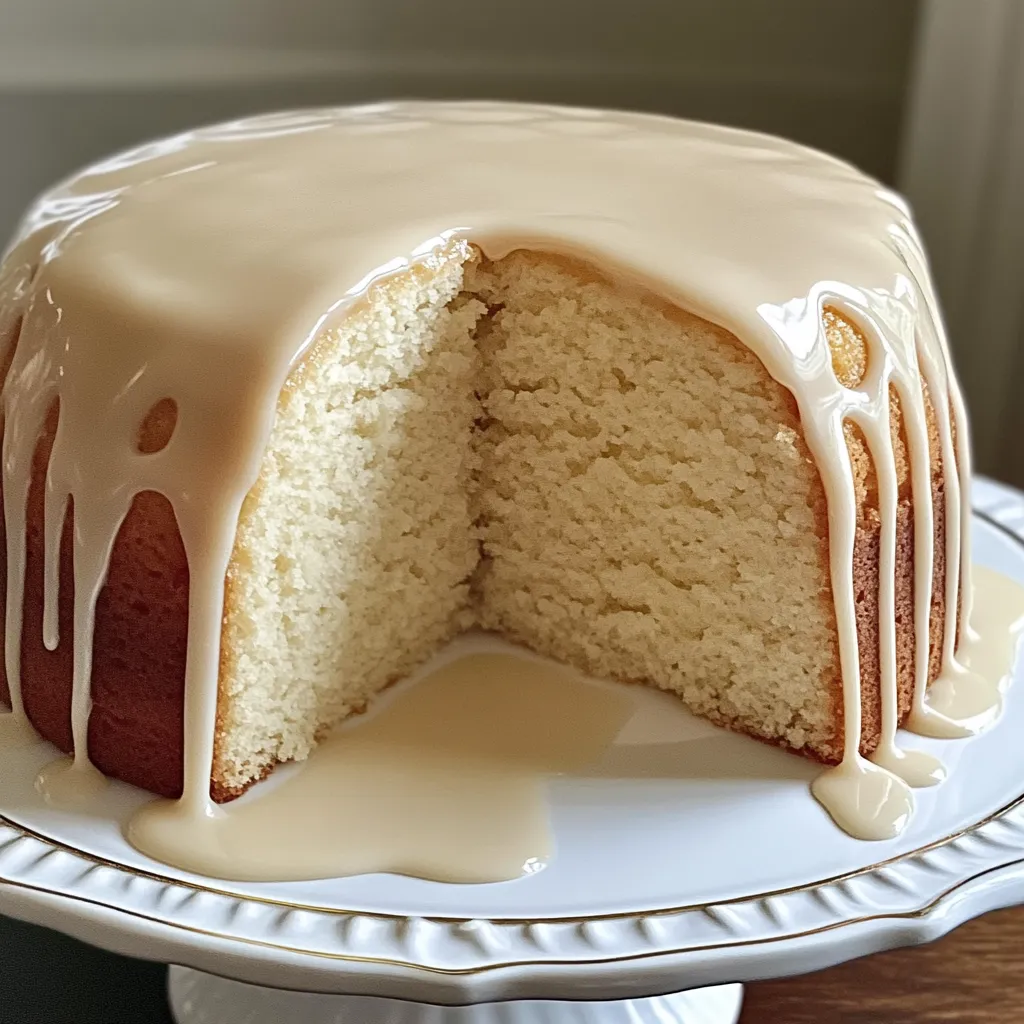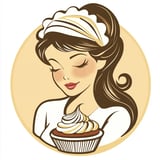 Pin it
Pin it
Vanilla Buttermilk Pound Cake with Cream Cheese Glaze transforms simple pantry ingredients into an elegant, velvety dessert with a perfect balance of sweetness and tang. The buttermilk works its magic in the batter, creating a remarkably tender crumb with a subtle tang that complements the warm vanilla notes permeating every bite. The cake emerges from the oven with a golden, slightly crisped exterior that gives way to a moist, buttery interior that melts on your tongue. Crowned with a silky cream cheese glaze that drips languidly down the sides, adding both visual appeal and a tangy counterpoint to the sweet cake, this timeless dessert elevates any occasion from ordinary to memorable with its simple sophistication.
I developed this recipe while searching for the perfect pound cake that would stay moist longer than just a day. After experimenting with various liquid ingredients, buttermilk emerged as the clear winner, transforming a good pound cake into an exceptional one. The first time I served this at a family gathering, my grandmother—a notoriously particular baker—asked for the recipe, declaring it better than her traditional version she'd been making for decades. That moment confirmed I'd found the perfect formula, and it's remained unchanged through years of serving it at everything from casual coffee dates to holiday celebrations.
Perfect Ingredients
- All-purpose flour (3 cups): Provides the sturdy foundation while maintaining tenderness
- Baking powder (1 teaspoon): Creates the perfect rise without compromising density
- Salt (½ teaspoon): Enhances all flavors and balances the sweetness
- Unsalted butter (1 cup, softened): Delivers rich flavor and that signature pound cake texture
- Granulated sugar (2 cups): Sweetens while helping create that fine-grained texture
- Large eggs (4, room temperature): Add structure, richness, and golden color
- Vanilla extract (2 teaspoons): Infuses the cake with warm, aromatic sweetness
- Buttermilk (1 cup, room temperature): Ensures incredible moistness and tender crumb
- Cream cheese (4 oz, softened): Forms the base of a tangy glaze that complements the sweet cake
- Powdered sugar (1 cup): Creates a smooth, sweet glaze without grittiness
- Milk or heavy cream (2-3 tablespoons): Adjusts the glaze to the perfect consistency
Cake Creation
Careful Preparation
Begin by properly preparing your bundt pan, as this will determine how beautifully your cake releases. Thoroughly grease every crevice with softened butter, paying special attention to the center tube and any decorative ridges. Dust the greased surface with flour, tapping out any excess. This crucial step ensures your cake will emerge intact, preserving its beautiful shape. Meanwhile, allow your refrigerated ingredients—butter, eggs, and buttermilk—to come to room temperature. This seemingly minor detail dramatically impacts the cake's texture, as room temperature ingredients incorporate more air and blend more smoothly than cold ones.
Butter Transformation
Using an electric mixer, cream softened butter and granulated sugar at medium speed for a full 5 minutes, until the mixture becomes notably lighter in both color and texture. This extended beating time isn't merely a suggestion—it's essential for incorporating air that creates the cake's fine crumb. The butter-sugar mixture should transform from dense and yellow to fluffy and almost white. This process, known as creaming, forms the foundation of your cake's texture. Patience here results in a lighter, more tender cake rather than a dense, heavy one.
Egg Integration
Add eggs one at a time, beating well after each addition until fully incorporated before adding the next. This method prevents the batter from curdling and ensures each egg is properly emulsified into the mixture. After all eggs are incorporated, beat in the vanilla extract until the batter is smooth and homogeneous. The batter may look slightly curdled at this stage—this is normal and will resolve once the dry ingredients are added. The eggs provide structure, richness, and a beautiful golden color to the finished cake.
Gentle Alternating
In a separate bowl, whisk together flour, baking powder, and salt until evenly distributed. Add these dry ingredients to the batter in three portions, alternating with two additions of buttermilk, beginning and ending with flour. Mix on low speed just until each addition is incorporated, and scrape down the sides of the bowl between additions. This alternating method prevents gluten from developing excessively, which would make the cake tough rather than tender. The final batter should be smooth and thick, with a silky consistency that drops slowly from the beater.
Careful Baking
Pour the batter into the prepared bundt pan, smoothing the top with a spatula to ensure even distribution. Place in a preheated 325°F oven and bake for approximately 60-65 minutes. The lower temperature allows the cake to bake gradually and evenly, preventing a dark exterior before the interior is fully baked. The cake is done when a wooden skewer inserted into the center comes out clean or with a few moist crumbs, and the top springs back when lightly touched. Avoid opening the oven during the first 45 minutes of baking, as temperature fluctuations can cause the cake to sink.
Cooling Patience
Allow the finished cake to cool in the pan for exactly 10 minutes—this timing is crucial. If removed too soon, the cake may break; if left too long, it may become difficult to release. After 10 minutes, invert the cake onto a wire cooling rack and gently lift off the pan. Let the cake cool completely to room temperature before glazing, which takes approximately 2 hours. This cooling period allows the cake's structure to set and flavors to develop. Though it's tempting to glaze the cake while warm, doing so would cause the glaze to melt and be absorbed rather than creating that beautiful dripping effect.
Glaze Perfection
While the cake cools, prepare the cream cheese glaze by beating softened cream cheese until completely smooth. Gradually add powdered sugar and vanilla, mixing until fully incorporated. Add milk or heavy cream one tablespoon at a time until the glaze reaches a pourable consistency that's thick enough to cling to the cake without being runny. When the cake is completely cool, place it on a serving plate and drizzle the glaze over the top, allowing it to cascade naturally down the sides. For a more polished look, use a spoon to guide the glaze into the cake's natural ridges.
 Pin it
Pin it
My grandmother always insisted that a true pound cake should be dense enough to have "presence" but tender enough to melt in your mouth. She taught me that quality ingredients and patient technique matter more than fancy additions. This recipe honors her wisdom while incorporating the modern improvement of buttermilk for added moisture and flavor complexity. Whenever I slice into this cake, I think of her kitchen—how she'd test doneness by listening to the cake ("It shouldn't sizzle," she'd say) and how she'd never rush the cooling process. These small but significant details transform a simple cake into something truly special.
Serving Suggestions
Serve slices of this elegant pound cake on small dessert plates with a fork for a refined presentation. For a casual brunch, offer it alongside fresh berries and whipped cream for guests to add as desired. During warmer months, serve with a scoop of vanilla ice cream or lemon sorbet that melts slightly into the cake. For a holiday presentation, dust the glazed cake with a light sprinkle of cinnamon or freshly grated nutmeg. This versatile cake pairs beautifully with coffee or tea, making it perfect for afternoon gatherings or as a sophisticated conclusion to dinner.
Creative Variations
Transform this classic pound cake by incorporating different flavors and additions. For a citrus version, add the zest of two lemons or oranges to the batter and substitute some of the vanilla extract with fresh juice in both cake and glaze. Create a marble effect by removing one cup of batter, mixing in three tablespoons of cocoa powder, and swirling it through the vanilla batter before baking. For a holiday variation, add ½ teaspoon of almond extract to the batter and top the glazed cake with toasted sliced almonds and candied cherries. During fall, incorporate warm spices like cinnamon, nutmeg, and cloves for a spice cake variation.
Storage Success
This cake maintains its moisture remarkably well, stored properly at room temperature in an airtight container for up to three days. For longer storage, refrigerate for up to one week, allowing slices to come to room temperature before serving for the best flavor and texture. For extended storage, freeze unglazed cake tightly wrapped in plastic wrap and then aluminum foil for up to three months. Thaw overnight in the refrigerator while still wrapped, then bring to room temperature and add fresh glaze before serving. Individual slices can also be frozen and thawed for portion control and extended enjoyment.
I've baked countless variations of pound cake throughout my culinary journey, but this buttermilk version remains my signature recipe for its perfect balance of simplicity and sophistication. There's something deeply satisfying about a dessert that doesn't rely on bells and whistles to impress—just quality ingredients treated with respect and attention to detail. What makes this cake truly special is how it brings people together, creating moments of shared appreciation whether served at an elaborate holiday gathering or a quiet afternoon coffee. It reminds us that sometimes the most memorable culinary experiences come from perfecting the classics rather than chasing novelty.
 Pin it
Pin it
Frequently Asked Questions
- → Can I make this cake without a bundt pan?
- Yes! You can use two 9x5 inch loaf pans instead. Reduce the baking time to about 45-55 minutes and check with a toothpick for doneness.
- → How do I know when the pound cake is done?
- The cake is done when a toothpick inserted in the center comes out clean or with a few moist crumbs. The top should be golden brown and the cake will have started to pull away from the sides of the pan.
- → Why did my pound cake crack on top?
- A crack on top is actually normal for pound cakes! It happens as the outside sets before the inside is fully baked. The crack is traditional and gives the cake character.
- → Can I add other flavors to this cake?
- Absolutely! Try adding lemon or orange zest, almond extract, or fold in some fresh berries. For a spiced version, add cinnamon, nutmeg, and a pinch of cloves.
- → Why use buttermilk in a pound cake?
- Buttermilk adds a subtle tang and helps tenderize the cake by breaking down the gluten in the flour. This creates a softer, more moist cake with a tender crumb.
